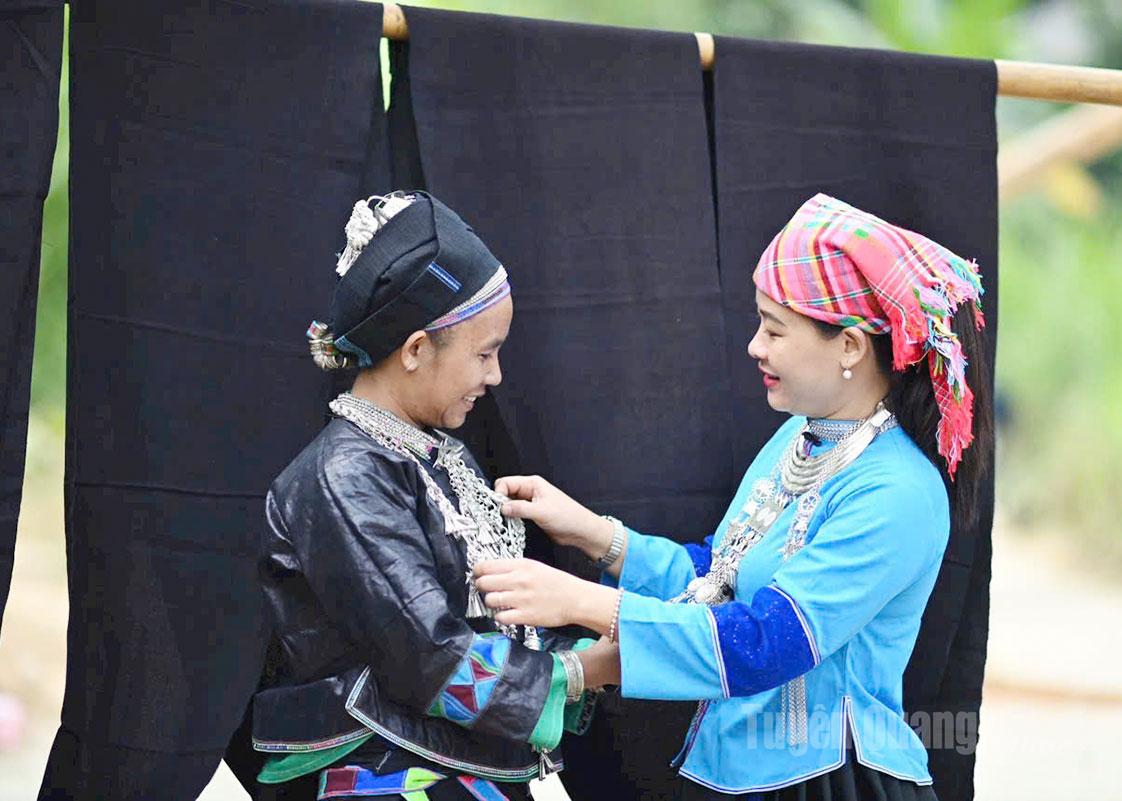Indigo colour in the dresses of Nung U women in Nam Dan
Nestled beneath the primary forest of Deo Gio, Nam Dan commune has long been known as a place that preserves the traditional culture of the Nung U people. Amidst the spread of modern life, the Nung U people in Nam Dan have still maintained the crafts of indigo dyeing and brocade weaving, creating dresses imbued with traditional cultural identity
 |
| Nung U women often wear traditional black costumes combined with silver jewelry during Tet and other festivals. |
The Nung U people have a long history rich in unique customs and practices, but the most distinctive feature is their women's clothing. The Nung U women's dress is not as colourful as some other ethnic groups, but is simple and elegant with a quiet indigo tone.
The blouse is loose-fitting and falls just below the waist, with silver buttons down the centre of the chest. The neckline, sleeves, and hem are decorated with strips of blue and white fabric or contrasting coloured threads. The skirt worn by Nung U women is ankle-length and neatly pleated. It is wrapped around the back and fastened securely at the waist. When working in the fields, one corner of the skirt is tied behind the back, showing a look that is both modest and graceful.
Accompanying the skirt is an indigo five-panel shirt, short enough to cover the hips, loose enough to be convenient for working in the fields. The sleeves are often covered with black fabric, creating a subtle highlight. During weddings or festivals, they wear a scarf and silver jewelry such as necklaces, bracelets, hairpins, etc.
Mrs. Vang Thi Phuong, from Thong Nhat hamlet, Nam Dan commune, said:
“To produce durable indigo-dyed fabric, the indigo plant plays an important role in the daily life of the Nung U people. They cultivate, harvest, and ferment the indigo leaves, then stir the indigo water with lime and filter out the jade-green essence. From the jar of indigo water, through the hands of the women, pure white cotton fabric gradually absorbs the deep blue-black colour. It is then dried in the sun and polished with smooth pebbles or pieces of wood, so that the fibers become shiny, smooth, strong, and take on the characteristic black hue”.
Not only preserving their traditional crafts, the Nung U people in Nam Dan consider indigo clothing as a meaningful bridge to community-based tourism. Visitors come to Nam Dan not only to admire ancient stone slabs with mysterious carvings or to enjoy the pristine mountain landscape, but also to experience hands-on activities like picking indigo leaves, fermenting the dye, coloring fabric, sewing shirts, and embroidering scarves. Each piece of indigo-dyed fabric becomes a keepsake - a fragment of memory and a living expression of Nung U ethnic culture in Nam Dan.
Van Long





READER COMMENTS